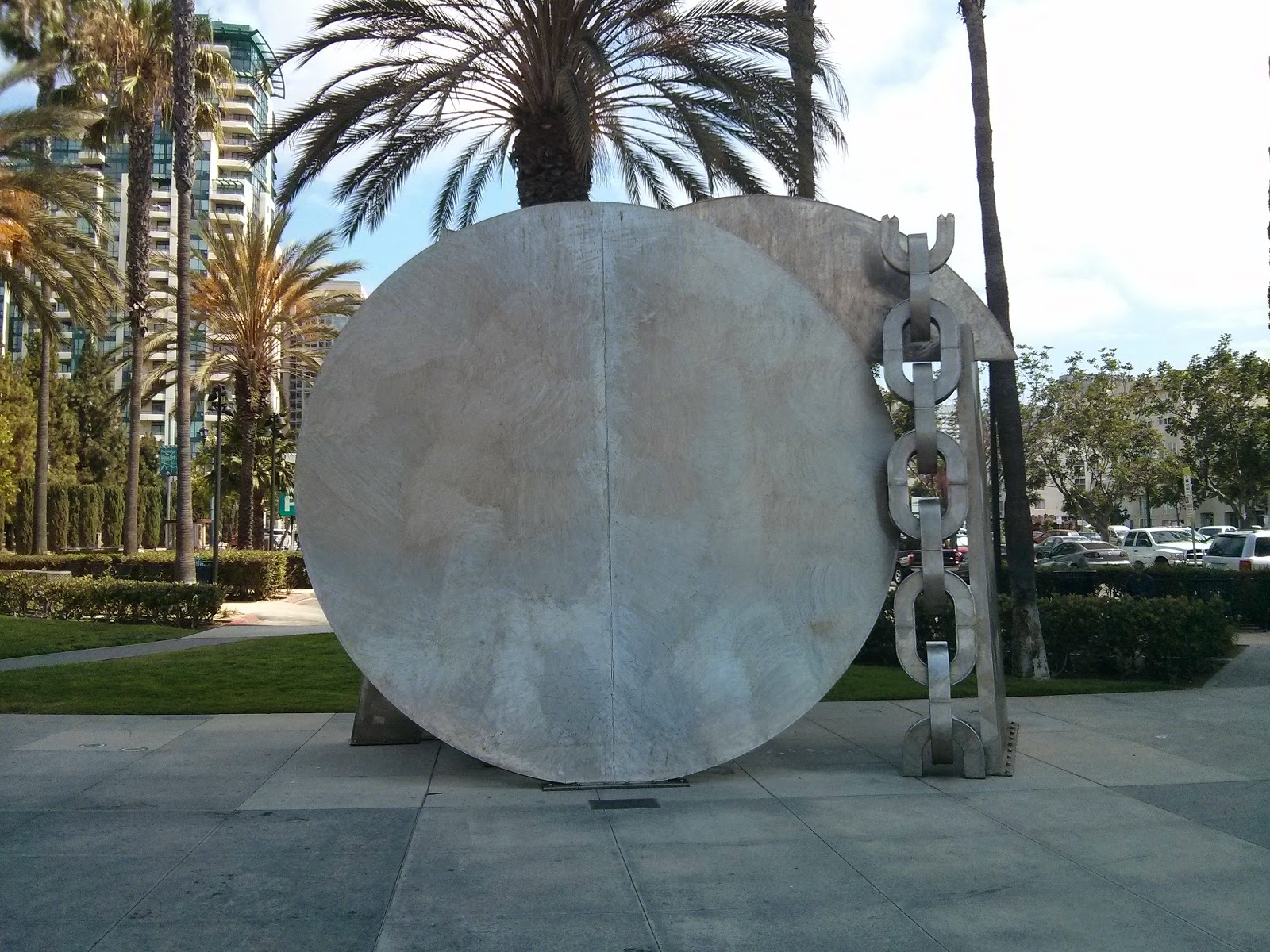San Diego is well on its way to becoming a city destined for environmental salvation. According to the non-profit Environment California Research & Policy Center San Diego Ranks second in the nation in terms of solar power usage. We are doing well in protecting our environment and ensuring a sustainable future. That doesn't mean we can't do more.
Creating streamlined processes for solar power installation approval as well as encouraging higher levels of solar power reliance is beneficial for setting the framework for sustainable cities. If there are any unnecessary restrictions on installing solar panels it will raise the overall customer costs and slow the pace of solar integration.
There are advantages to developing solar panels that include less reliance on outside sources of energy, lowering long-term costs, and reducing environmental costs. As more renewable sources are developed the city will lower its overall carbon footprint and slow its contribution to environmental problems.
Finding the right policies, awareness processes, and incentives helps to ensure people make a equitable choice to use renewable sources. With solar panels there is often a higher initial investment but much lower costs spread out over the duration of the panels. Making sure people understand where they can get panels and their true costs can tip the scales in consumer choice.
Solar panels and ecologically designed cities are the way of the future. Those cities in the process of transformation and building new infrastructure should consider the benefits of developing ecologically sound practices. San Diego is in a strong position to foster ecological hubs that spur new industries in environmental and blue economic development.
http://www.environmentcaliforniacenter.org/
The blog discusses current affairs and development of national economic and social health through unique idea generation. Consider the blog a type of thought experiment where ideas are generated to be pondered but should never be considered definitive as a final conclusion. It is just a pathway to understanding and one may equally reject as accept ideas as theoretical dribble. New perspectives, new opportunities, for a new generation. “The price of freedom is eternal vigilance.”—Thomas Jefferson
Showing posts with label solar panels. Show all posts
Showing posts with label solar panels. Show all posts
Monday, March 30, 2015
Wednesday, February 25, 2015
Using Solar Panels in San Diego Schools to Save Costs and Protect the Environment
The cost of education is going up in San Diego and it
has nothing to do with curriculum. According to an article in UT San Diego the
cost of electricity for public schools in San Diego County bounced to $30
million (1).
Over half of these school districts saw their electricity bills explode to over
43% in the past six months. Officials are upset as the costs are crushing their
budgets and soaking up resources. An evaluation of the long-term nature of this
problem and the possibilities of implementing solar panels is beneficial.
Installing solar panels on the roof and facilities of
San Diego schools is not an impossibility as the idea as it has already been completed
in Orange County Schools. The project costs $17 million dollars and is a 20
year commitment that generates 6.6 million kilowatt hours of solar energy per
year that removes the equivalent of the pollution of 12,000 cars per year from
the environment (Yarbrough,
2010).
The benefits of solar program will need to be
calculated through a thorough feasibility study of the use of energy, the
investment costs of solar panels, and the options for financing to ensure that
it makes sense. If it creates a net positive value for the school district and
the length of the school buildings themselves then it should be a project worth
considering.
The other issue is the use of electricity and whether
or not there are other ways to save on costs. Massachusetts’s School District changed
their lighting, thermostat control, and energy monitoring to save money
(Connell, 2014). The conservation of energy can take a nice bite out of the
cost of running the schools and can lead to tertiary learning about other ways
to improve the schools.
There are no easy solutions but one of the ones that
are most likely are using alternative sources of energy and starting to spark
San Diego into a place where sustainable development is a viable option.
Projects like water desalination and solar panel inclusion help create multiple
sources of resources. Better monitoring and using technology to reduce waste in
those systems further helps the city make it to the next stage of development.
Connell, J. (2014). A massachusetts school district’s
pioneering path to solar. Environmental
Design & Construction, 17 (8).
Yarbrough, S. (2010). Going solar in Orange County
Schools. Sustainable Facility, 35
(1).
Wednesday, December 10, 2014
Walmart Uses Solar Panels to Cut Expenses
Energy conservation is still a hot topic and an important
part of developing stronger, more efficient, and a more innovative economy that
reduces potential solutions. Walmart has become more innovative by using solar
panels on top parking spaces to provide better use of surfaces. Their goal is
to have 100% renewable energy sources that cut back on other bills and
problems.
At the end of 2013 the company had 335 renewable energy
projects. They save the environment 2.2 kWh of energy globally that doesn’t need
to come from oil, gas, coal, or other non-renewable sources. The projects are
completed on a large enough scale that it is more cost effective than others.
You may read more about their efforts at their site.
Walmart is at the forefront of encouraging sustainable energy
development. Something likely reaching way back into the family’s farmer and conservation
past. You will notice this as you drive or walk into the parking lot and see
the carports that protect your automobile from the blistering sun. Kind of nice
to get into your car without a wall of heat while still helping society curb
global warming.
The technology that goes into reusable energy has grown over
the past few decades. Becoming stronger, bigger, and more cost effective for
large companies like Walmart. It is believed that if solar and wind energy were
harnessed appropriately it would supply enough energy for the entire world
(Quanhua, et. al. 2009). This alone can be one reason to keep developing and
implement technology.
It is refreshing to see companies like Walmart make efforts
to curb global warming while reducing their costs on maintaining energy. They
have a goal to someday be 100% renewable in energy. It may be a lofty goal but
if there is one thing that Walmart is good at is finding efficiencies in
economies of scale. It won’t be long other companies start following their
path.
Quanehue, L., et. al. (2009). Solar and wind energy
resources and prediction. Journal of
Renewable & Sustainable Energy, 1 (4).
Monday, January 6, 2014
Capturing 30% More of the Sun’s Energy with Solar Panels
Sustainable
technology is developing. As researchers put more energy into sustainable technology
like solar panels they naturally become more efficient and cost effective. Chemists led by Jianhui Hou from the Chinese
Academy of Sciences and North Carolina State University created a polymer known
as PBT- OP that, “was not only easier to
make than other commonly used polymers but showed an open circuit voltage value
of 0.78 volts — a 36 per cent increase over the 0.6 volt average from similar
polymers” (1).
This
means that solar panels may soon be 30% more effective than in the past. The discovery helps to retain more excitrons
than in the past (2).
When electrons make their way onto the
solar panel a certain amount of energy is lost in the transfer from the donor
to the receptor. The new polymer will allow for a higher level of efficiency in
transfer without as much loss.
This
may not be so exciting for some people. Yet if we think about the long term
implications of more effective solar panels we will come to understand that a
30% increase in solar panel efficiency as a clean energy has a profound impact.
As people begin to use more solar panel and other clean energy products a 30%
increase in the energy development is amazing. The future of energy and
pollution reduction is within such research and someday it may be possible to
reduce our overall carbon footprint.
Watch a Video on Solar Power
Subscribe to:
Posts (Atom)


